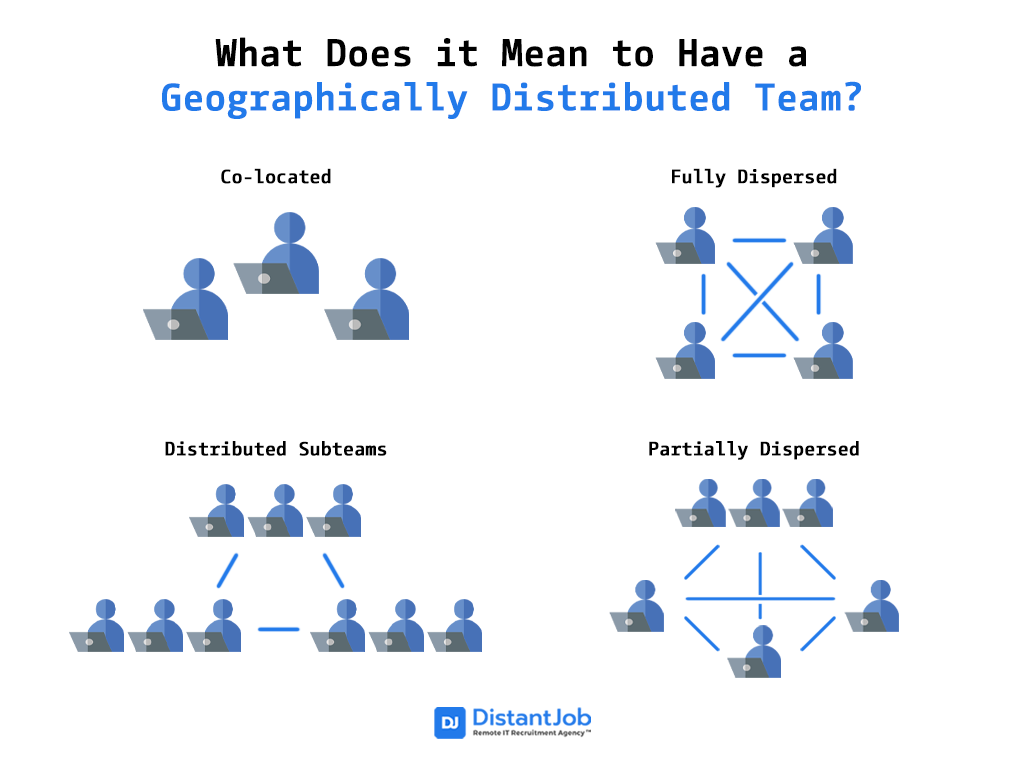There are two types of remote managers: Those who were forced to adapt to a remote work environment and manage a dispersed workforce due to the pandemic, and those who’ve been working and managing a remote team for years.
Regardless of what group you fall into, the truth is that managing a geographically distributed team always comes with its challenges.
A Harvard study suggested that most managers struggle to manage a team that’s spread out in many locations, with one-third of them (29%) questioning whether their employees had the required knowledge to do their work, and more than one-quarter (27%) agreeing their employees lacked essential skills.
So, what are the best practices for managing a remote team successfully? How to build trust and healthy team dynamics?
For over ten years, I’ve led teams from Argentina to Canada, all remotely. My company is 100% remote, and through this, I’ve learned key lessons on keeping a team unified and motivated, even when miles apart.
This article shares those lessons with you, providing straightforward tools and tips to effectively manage your distributed team.
What Does it Mean to Have a Geographically Distributed Team?

A geographically distributed team refers to when organizations’ employees or team members are geographically separated and work from different locations rather than being concentrated in a single physical office or location.
This includes hybrid arrangements as well, wherein certain employees operate entirely remotely while others are situated in a shared physical location. The term also applies to scenarios in which team members alternate between working on-site and remotely.
7 Challenges of Managing a Geographically Dispersed Team
How do you manage a dispersed workforce? While there’s no one-size-fits-all formula for everyone as team dynamics are different, I can tell you one thing: Replicating the same onsite processes to virtual environments is a huge mistake.
Here’s how you can address the most common challenges about managing a remote team:
1. Lack of Trust
For some leaders managing an onsite team is easier. They can argue about teams being more productive or present, but the truth is that it all comes down to trust. If you’re used to lurking in your employees’ work, wanting to be on top all the time, managing a virtual workforce can be a nightmare for you.
Even with time-tracking tools, you still don’t have the same level of micromanagement you have in an onsite environment. But “trust” is a very broad concept, so how can you start delegating and empowering your team?
Solution: Focus on results and how your employees manage projects without you having to add input or control constantly. In other words, delegate and provide job autonomy. Rather than checking up on constantly, make check-ins from time to time, giving your team the space to ask questions, seek guidance and support.
2. Communication Barriers
It’s so easy to have misunderstandings in remote teams. This is why you need to have different communication channels and policies.
For example, in my team whenever we need to discuss relevant topics or urgent matters we always do this by Zoom. We also record the meetings and we transcribe them in case we want to go individually by some of the key points.
When it comes to informal chats or things that can be solved easily, we use Slack. We love working async, mostly because most of the team is spread around the world, so it’s easier.
Some prefer communicating over emails or whiteboards, at the end of the day is what works for you and your team. But it’s important you have this well-defined so your employees always know where they can reach out to you and how.
Solution: Clear policies and communication expectations. Additionally, within this communication aspect, I always advise entrepreneurs that it really starts from the beginning: hiring. Make sure you hire people who have solid communication skills, regardless of what their role is.
3. Social Isolation
Being away from coworkers can cause all kinds of strain on employees’ mental and emotional wellbeing. Mostly because not all employees are the same. Some may love working alone from home, but others might miss the social aspect of the office.
A Zippia report showed that in 2022, 50% of remote employees experience loneliness at least once per week. 19% mentioned that isolation is their #1 problem at work, and 70% feel left out of their workplace.
Out of sight should never mean out of mind. So, how can you make your team feel accompanied?
Solution: Team-building activities can help curb remote workers’ feelings of isolation and loneliness. Consider instituting fun activities such as happy hours or game night via Zoom or any of your other favorite video conferencing platforms as a way to boost team building for dispersed teams. Also check in with them from time to time to take the pulse on how they are doing personally.
4. Building and Maintaining Company Culture
What makes people engaged with a company? Some might argue it is the money or benefits. But it’s really beyond that.
Company culture, which is often mistaken by beer pong games and company retreats, it’s much more than fun activities. At its core, company culture is establishing connection. If you don’t prioritize building a healthy company culture in your remote team, chances are you’ll have a high turnover rate.
Solution: Create a team that is always present, looking out for each other. This can be done from having virtual town hall meetings to creating employee feedback mechanisms where your team can share their thoughts anytime.
5. Establishing Robust Security
73% of executives believe that remote work involves having a greater security risk. This may be true if you don’t have robust security protocols.
When you have a remote team you need to teach your employees about safe digital practices. From identifying phishing emails that go beyond the prince of Nigeria to implementing password vaults and using other tools.
Solution: Start with employee education on security practices—from password management and secure Wi-Fi usage to VPNs, device updates, and the establishment of clear remote access policies and incident reporting procedures. Following this, having skilled developers elevates your security protocols to the next level.
6. Lack of Access of Information
In remote teams, especially when you have employees spread all over the world and different time zones overlap, employees might feel they don’t know where to turn for whenever they have questions.
This happens mostly in onboarding or when employees are learning how things work and how to use certain platforms and tools. While they can send you messages, the idea is that you also build an async dynamic so they can work independently without needing you all the time.
Solution: Documentation. For onboarding processes, make a checklist with all the things they need to learn from company policies to tutorials on using the tools. Next, always be clear on your schedule and encourage them to do the same. What hours will you be available? What hours are you doing deep work? This will help them know when they can reach out to you.
7. Productivity and Progress
In geographically distributed teams, productivity is not measured by time tracking tools. Yes, you can check who connected early, who started late and who worked the most. But this never guarantees who works better or more effectively.
Checking in on progress online is more about the results. This approach acknowledges that individual working styles and preferences vary, and the ability to produce meaningful results may not always align with conventional working hours.
Solution: The key lies in setting clear expectations and goals, allowing team members the flexibility to manage their time and work in a manner that suits their strengths and preferences. Regular check-ins then become more about reviewing achieved milestones, completed projects, and the overall impact on organizational objectives.
Final Challenge: Hiring the Right People
You could read all the possible strategies to address remote work challenges, read piles of books, and even take courses on this. But one thing is for sure, no matter how much you educate yourself on this subject, if you don’t have the right people on your team, obstacles will be much harder to overcome.
To overcome the challenge of hiring the right talent, consider looking for individuals who are career-driven, result-oriented, and possess strong communication skills. Seeking these qualities in potential geographically distributed team members can significantly contribute to building a successful remote workforce.
Having managed a remote company for more than a decade I know how difficult it is to hire the right talent. This is what drove me to create the first IT remote recruitment agency, that not only focuses on finding the right talent for your team but also on providing ongoing HR support.
Want to know more? Let’s talk!





